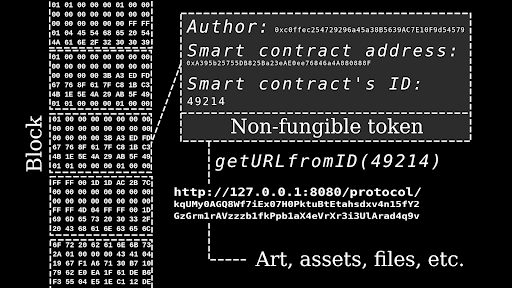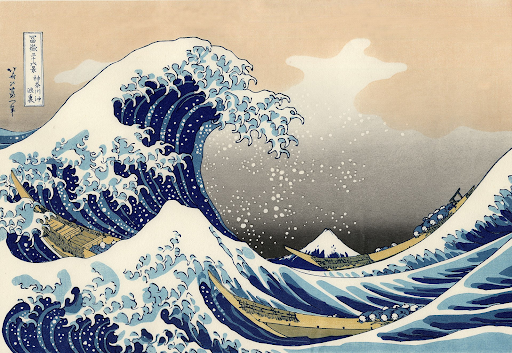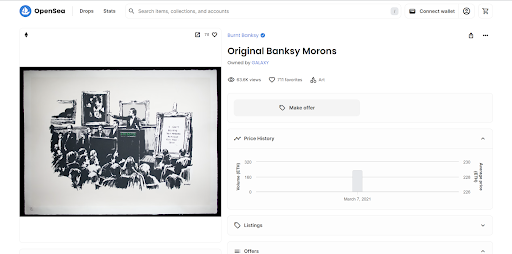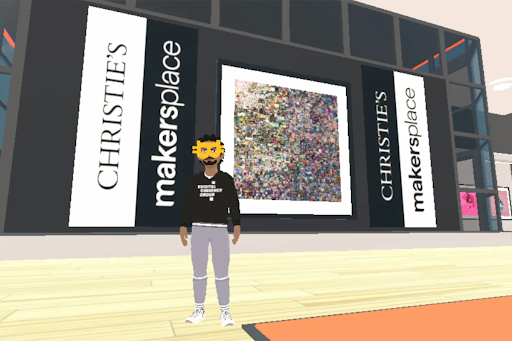
NFTs and Art Galleries: Working Together to Give Artists the Recognition They Deserve
Since their emergence, galleries have assisted creators in gaining recognition among potential clients, protecting intellectual property rights, and facilitating deals with collectors. However, with the rise of the digital era, galleries were forced to upgrade their infrastructure in the face of new challenges, although their main objectives remained almost unchanged.
Among these steps was the adoption of cutting-edge technologies such as non-fungible tokens (NFTs). These digital assets enable art institutions to effectively utilize opportunities of the digital landscape and provide creators with recognition equal to their efforts. However, for many galleries and their affiliated artists, NFTs still remain a more eye-catching novelty rather than a valuable tool.
To gain a clearer understanding of how this technology works and the advantages it offers to both galleries and their affiliated artists, we will provide an overview of the topic. We will begin with a basic definition and conclude with real-life collaboration between the art and NFT industries. So, strap in, and let’s get started.
NFTs: A New Frontier for Digital Art
Non-fungible tokens, more commonly referred to as NFTs, are unique digital assets created based on blockchain technology. This technology empowers NFTs to provide issuers and future owners with immutable proof of ownership and easily trackable provenance. By combining NFTs with digital or tangible assets such as artworks, collectibles, music samples, or virtual real estate, issuers can securely monetize these assets in the digital realm without selling the original item.

Compared to cryptocurrencies, those newly created or, as it’s referred to in the industry, minted NFTs are distinctive and cannot be replicated by anyone. As a result, they become a driving force that ensures the rarity and uniqueness of your offerings. However, the functionality of NFTs doesn’t end there, as they provide a diverse range of features to empower organizations and individuals in the digital age, including:
- Licensing & Royalties: Integrated with smart contracts, NFTs can automate royalty payments, ensuring ongoing compensation and granting issuers greater control over usage rights.
- Expended Utility: Tokens are created as programmable assets, enabling issuers to expand their functionality and offer buyers added value. For example, such tokens can be used as entrance passes to exclusive content, activities, or community channels.
- Cross-Platform Compatibility: Issuers can use NFTs across marketplaces and virtual exhibitions that adhere to blockchain standards, regardless of whether they were minted independently or in collaboration with specialized organizations.
The Role of Traditional Art Galleries in the Digital Age
The role of traditional art galleries in the digital age is undergoing transformation as these established institutions adapt to the evolving landscape. While traditional galleries continue to play a vital role in the art world, their functions are expanding to embrace the opportunities presented by digital technologies.
Today, traditional art galleries function as dynamic intermediaries between artists, collectors, and the broader public, bridging the gap between physical and virtual realms. These galleries maintain their historical roles of curating, promoting, and showcasing artworks, all while harnessing digital tools to amplify engagement, protect intellectual property, and encourage affiliated artists to incorporate new technologies into their craft. In the digital realm, they provide the art community with:
- Artist Representation: Galleries have dedicated themselves to representing artists by leveraging all necessary means and channels. Nowadays, they also extend their outreach into the digital realm to assist artists in navigating the new landscape, facilitating sales, and effectively utilizing cutting-edge technologies.
- Digital Presence: Beyond maintaining an online presence through websites and social media, galleries are also exploring unique spaces such as metaverses or digital exhibitions. There, they can showcase artworks, connect with audiences, and negotiate deals in a near-life environment that is more engaging and familiar to the audience.
- Community Development: Art institutions utilize various channels to cultivate art communities interested in specific artists or movements. While this practice has been ongoing since the Renaissance, events organized in the digital age enable creators to engage with art enthusiasts globally, extending beyond the confines of the local community.
- Technical Support: As with any new technology, NFTs require a certain level of proficiency. For some artists, adopting them may be complicated or time-consuming. So, by partnering with galleries, creators can delegate the process of adopting NFTs and concentrate solely on their craft.
Why Choose NFTs For Boosting Artists' Recognition
Choosing NFTs to enhance artists' recognition brings forth a compelling array of advantages that can significantly elevate their visibility and reputation.
For example, the tokenization of artworks provides an unparalleled global reach, enabling creators to showcase their works to an expansive international audience without the need to travel around the world. This direct engagement and unrestricted outreach foster meaningful interactions between artists and art enthusiasts, nurturing a dedicated community that appreciates the artist's vision.
In addition, through online NFT platforms that have become prevalent channels in the modern art market, artists can present not only their works but also provide comprehensive context about previous deals, owners, and prices. This way, both collectors and artists have a more transparent and secure art-collecting experience. As a result, such an innovation-driven environment encourages artists to explore and experiment with new digital mediums, cultivating a distinct artistic identity and promoting a more inclusive approach to art acquisition.
However, the key factor in adopting NFTs to amplify recognition is the technology itself. Levering the capabilities of programmable blockchains, smart contracts, cryptocurrencies, and decentralized finances, it provides both issuers and collectors with immense business opportunities, including:
- Showcasing diverse styles and genres to provide a comprehensive view of their artistic journey.
- Enhancing discoverability, ensuring enthusiasts can easily find and engage with the artist's creations.
- Articulating creative narratives, sharing insights into their inspiration, process, and the meaning behind each artwork.
- Generating an air of exclusivity and rarity, captivating collectors interested in possessing unique and scarce digital assets.
Ultimately, embracing NFTs introduces artists to a cultural shift within the art world, placing them at the forefront of technology-driven art collecting based on responsible ownership.
Collaboration Between NFTs and Galleries: Driving Artists’ Recognition in the Digital Realm
The synergy between NFTs and traditional art galleries can usher in a transformative adaptation of traditional gallery concepts to the virtual realm, redefining how art is exhibited, experienced, and valued. This innovative partnership seamlessly blends the time-honored essence of physical galleries with the limitless possibilities offered by digital technology, resulting in an enriched and globally accessible art ecosystem.
As a result, a growing number of institutions have begun adopting NFT technology in various ways, including:
- Partnering with specialized organizations like Digitised.Art that assists galleries and their affiliated artists in creating exclusive tokenized collections, driving their recognition within the community of art connoisseurs online.
- Launching their NFT offerings independently on public marketplaces like OpenSea, accessing a global pool of collectors dedicated to acquiring valuable NFT assets.
- Organizing exhibitions of their NFT assets in the digital realm through immersive metaverse platforms or in real life to promote them and offer visitors unique experiences.
Real-world Examples of NFT and Gallery Collaborations
LaCollection and The British Museum
One of the most famous art institutions that host an extensive collection of masterpieces, The British Museum, teamed up with LaCollection to tokenize their real-life assets and sell them in the form of NFTs. A prominent result of this collaboration was the creation of over 200 Hokusai NFT works, including the iconic Under the Wave off Kanagawa (The Great Wave) from the series Thirty-six Views of Mt. Fuji.

Banksy's Morons NFT at Taglialatella Galleries
Taglialatella Galleries, a traditional art gallery, collaborated with Banksy to release an NFT artwork titled Morons. While the elusive street artist's works are already widely known, this partnership not only increased their accessibility to the general public but also reinforced the role of the NFT realm as a valid form of art collecting.

Digital Art Galleries on Decentraland
Various art galleries and artists have established virtual exhibition spaces on blockchain-based metaverse platforms like Decentraland, showcasing NFT artworks and immersive digital experiences. This approach allows art enthusiasts to visit exhibitions and events, as well as purchase artworks, regardless of their location or connections, all without the need for human personnel involvement.

As evident from our in-depth examination of NFT adoption by art institutions, this new technology was, is, and will be a driving force in the art community for generations to come. With their diverse functionalities, relatively lower entry threshold, and already established ecosystem, NFTs are assets that no one should overlook or omit from their businesses, especially art institutions. Therefore, we recommend delving even further into how NFTs are transforming the art world by exploring our blog before diving in firsthand.
Related articles



